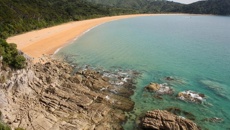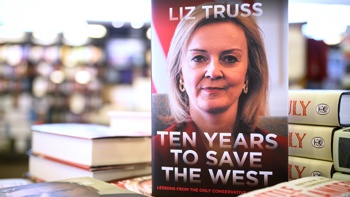In the shadow of the Christchurch quake, disaster tourism soon emerged as a visitor magnet. Rubber-neckers, from around the world, traipsed through the broken city, snapping away like vultures at the weeping wounds of a smashed up urban landscape. I was mindful of the indignity of that niche tourist trend, when visiting Hiroshima recently. In a way, I too felt like a global rubber-necker, drawn to the city by its darkest days, when so many people were wiped out in one instant of apocalyptic destruction.
Despite its horrific backstory, the biggest surprise that struck me about Hiroshima was its embracing beauty, an instantly agreeable city, soothingly swathed in vast green spaces, eye-catching sculptures, lush and leafy streets and curvaceous rivers. Rather than replicate the pre-war cityscape, the new Hiroshima was built as a modern and appealing city, with easy-to-navigate streets. I loved stepping out for a stroll, on the spotlessly clean streets, and riding the trams that zip you all over the city.
But it’s the raw and poignant atomic legacy that commanded my exploration. The most haunting reminder of the bombing, which instantly incinerated tens of thousands of residents, is the A-Bomb Dome. Located at the confluence of the Ota and Motoyasu rivers, and adjacent to the Peace Memorial Park, this landmark was formerly the Industrial Promotion Hall, situated at ground zero of the bombing.
When the first bomb was dropped on Hiroshima, it exploded 500 metres above the building, killing its occupants instantly. Now preserved as a World Heritage site, its twisted girders, gaping holes, piles of rubble and shell-like appearance is shockingly evocative, bracketed in verdant trees. Inside the Peace Memorial Park, I rang the Peace Bell, which visitors are encouraged to do. Nearby is the Memorial Mound, a monument containing the unclaimed or unidentified ashes of thousands of bombing victims, interred in an underground vault.
The saddest memorial is the Children's Peace Monument, which depicts a girl with outstretched hands, while a crane bird, the Japanese symbol for longevity, flutters above. The monument refers to an 11 year girl, Sadako Sasaki, who believed that if she made 1000 paper cranes, she would recover from her leukaemia, which developed in 1955. She didn’t survive, but as I noticed, the memorial is regularly adorned by fresh paper cranes made by school children all over Japan.
Across the road is the curved beauty of the Cenotaph, which artfully frames the A-Bomb Dome and the Flame of Peace, which will only be extinguished when all nuclear weapons in the world have been eliminated. From there, I ventured inside the Peace Memorial Museum, which graphically showcases the horrifying consequences of the atomic blast.
It's the sight of the charred, mangled child's tricycle, inside the museum, that really tugged at my heart. The scorched bike was donated by Nobuo Tetsutani, whose three year old son, Shin, died hours after the atomic bombing of their city. Nobuo found the barely alive Shin clinging onto the trike’s handlebars, trapped under the rubble of their destroyed home, before dying later in the evening.
The museum vividly confronts and challenges our basic humanity through the extensive photographic and video displays, but most powerfully, by the personal stories and exhibits of some of the civilian casualties. Some displays are unapologetically gruesome, underpinning the emotional impact of this unvarnished account of truth and human consequences. I was struck by the watch on display, that stopped ticking at 8.15am, when the bomb exploded, worn at the time by Akito Kawagoe.
There are various school uniforms, ripped apart and burnt, worn by children at the time of the bombing; mangled lunch boxes and deformed glass bottles, consumed by the horrendous heat. There are searing first-hand accounts from survivors of the bombing, who later died from their horrific burns, radiation disorders and cancers. They embody the pain and grief of real people. The final death toll has been estimated at 200,000.
Outside the museum are the so-called Phoenix Trees, which were growing 1.5km away from the hypocentre of the explosion. In recent years they have been transplanted by the museum and they still bear the crude scorch marks of the bombing's heat rays. Beyond the Peace Memorial Park, it certainly helps to dispel the gloom and emotional weight of history, by soaking up Hiroshima’s post-war renaissance.
I love how the city has developed so many urban gardens, studded with ponds, miniature bridges and magnificent sculptures. It's all so mood-enhancing and pleasing to the eye. The central shopping district is bright, bustling and buzzy. Another unexpected delight is Hiroshima Castle, which seemingly floats on its moat. Destroyed by the bomb, it has been faithfully reconstructed and the main courtyard also includes trees sporting scorch marks from that fateful day.
Regardless of the politics of war, and your individual perspective on whether the United States actions were warranted in a bid to bring an end to the war, there is no denying the profound, sobering and insightful impact a visit to Hiroshima serves up. Steeped in the embers of tragedy, its wide leafy boulevards and laid-back friendliness, demonstrate humanity at its best and worst. The darkest of days, a people’s resilience, and a city rebuilt with its arms wide open to the world.
Add a Queensland warm-up to a Japan getaway and enjoy a far shorter flight to Tokyo with Jetstar. Flying direct from the Gold Coast and Cairns, Jetstar’s 787 Dreamliner services deliver added comfort at unbeatable value, as you wing your way to Tokyo. Jetstar has recently relaunched its Club Jetstar membership programme in New Zealand. The programme offers travellers access to special 'member only' fares, 20% discount on baggage and seat selection products, and early access to the biggest sales. www.jetstar.com
I booked my Hiroshima accommodation through Hotels.com, which was fast, efficient and packed with great deals. Hotels.com Rewards gives you one free night after 10 nights booked– which can be banked for future holidays. Rewards members and mobile app users also have exclusive access to Secret Prices. I found the Hotels.com mobile app to be a simple, fast and secure way to book your perfect hotel, on the go.
Zip your way around Japan on their slick, speedy and super-comfy Shinkansen trains. Pre-purchase a Japan Rail Pass, which delivers great value for money, total flexibility and travel convenience. Contact Rail Plus, the experts in rail, to secure a pass to suit. www.railplus.co.nz
Mike Yardley is our Travel Correspondent on Jack Tame Saturday Mornings.
Take your Radio, Podcasts and Music with you









